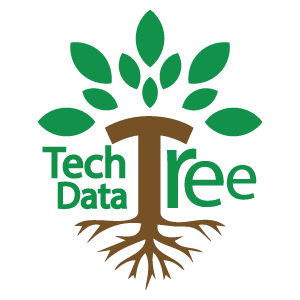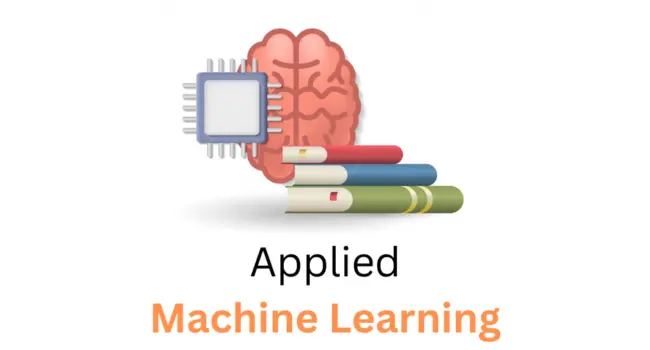Start Your Applied Machine Learning Journey Today
Applied machine learning is changing the world around us. It enables autonomous decision-making systems that allow robots to learn from data and make intelligent choices without constant human intervention. This is sometimes referred to as applied ML or AI machine learning. You see it every day, such as when your phone unlocks with your face or when a business suggests what to buy. Machine learning is a subfield of artificial intelligence that tackles real-world problems. It works in hospitals, banks, schools, and even farms. It enables people to save time, operate more efficiently, and stay safe. This guide will explain applied machine learning, why it’s important, and how to get started with it. It’s simple to grasp and can help you build a smart, future-ready career. What is Applied Machine Learning? Applied machine learning involves using intelligent technologies to solve real-world problems. It’s not just about writing code. It is about helping computers learn from data. When we employ machine learning, we teach machines to handle complex tasks like identity authentication systems and make better decisions across various applications. Doctors use machine learning to spot diseases early. Shops use it to recommend things you might like. Banks use it to detect fraud. When we use AI technology in our daily lives, everything becomes faster and safer. The latest AI technology helps us in a variety of ways, including at home, work, and school. Everyone benefits from applied machine learning, which makes life easier, wiser, and more fun. It is an integral part of our modern world. Why Applied Machine Learning Matters Applied machine learning is changing the way people work and live. Many people nowadays use artificial intelligence to make decisions and solve everyday problems. Schools use it to help students. Manufacturers use it to fix machinery before it fails. This effective way of working saves both time and money. It also helps you grow. Learning applied ML gives you advanced AI skills. It encourages AI professional advancement and allows you to stand out in the workplace. According to IBM and McKinsey research, data-driven organizations are adopting machine learning and artificial intelligence at a rapid worldwide scale to gain competitive advantages. This means additional duties and tools to use. If you begin implementing AI today, you will be ready for the future. It’s a sensible step toward success. Getting Started with Applied Machine Learning Starting with applied machine learning is easy and parties. It tells you how innovative tools can solve problems in real life. This article will present basic methods that anyone may apply. Step 1: Understand the Basics Let’s start with the basics. Machines may learn in three simple steps. These include supervised and unsupervised learning, as well as reinforcement learning. Understanding this will help you get started. Learn About AI and Machine Learning To begin with applied machine learning, you must first grasp how computers learn. There are three basic ways to think about this. Supervised learning involves guiding the computer with specific examples, like as showing a picture of a dog and calling it “dog.” Unsupervised learning is enabling the computer to group items on its own, such as finding similar shapes in photos. Reinforcements learning resembles a game. The computer wins points for doing the right thing, much like a robot learns to walk. These methods of learning enable robots to gradually become smarter and address real-world problems in an understandable and practical manner. Differences Between AI, ML, and Data Science AI, machine learning, and data science may sound similar, but they are not. AI is the big idea. It entails making machines smarter. We accomplish this via machine learning, which allows machines to learn from data. Data Science is the process of extracting useful information from data sources. All three use intelligent approaches, including supervised and unsupervised learning techniques, as well as other machine learning methods. These tools enhance computers’ understanding of the world. Learning becomes easier if you comprehend the differences between them. You’ll also understand when to apply each one to your current or future projects. Step 2: Master the Prerequisite Skills Begin by learning some basic skills. Basic math, statistics, and chance skills, as well as fundamental programming and data analysis skills, will be needed. These are quite useful! Basic Mathematics You don’t need to be a math genius to study applied machine learning. Just understand the principles. Math for machine learning teaches you how machines improve. A little math for ML shows how changes happen over time. It’s akin to seeing how fast a car drives. Simple math shows you how the computer learns and improves. These numerical talents increase your confidence and allow you to think clearly. Once you’re used to them, problem solving using ML becomes much easier and even entertaining. Statistics for Beginners Statistics and probability can help you find numerical trends. This is particularly important in applied machine learning. You’ll need to start with descriptive statistics, which is understanding what the data shows. It’s like reading a story with numbers. You learn to recognize numbers that are enormous, little, or uncommon. Understanding statistics allows you to make better decisions with your facts. It’s a necessary skill for working with smart machines. Even if you’re just getting started, some practice will help you learn faster. Introduction to Programming You don’t need to be a programmer to begin. Many people begin without any prior programming experience. Simply go step by step. Programming involves telling the machine what to do. You can begin with simple tools that teach you how to write short instructions. It’s like giving your computer minor tasks. You’ll eventually learn how to write smart programs. This allows you to experiment with machine learning models and address real-world challenges. Start cautiously and remain curious, and you will do well. Data Structures and Manipulation In machine learning, data is the most important component. You’ll be dealing with data structures like tables, lists, and charts. These allow you to save and organize information. After you’ve grasped the
Start Your Applied Machine Learning Journey Today Read More »

